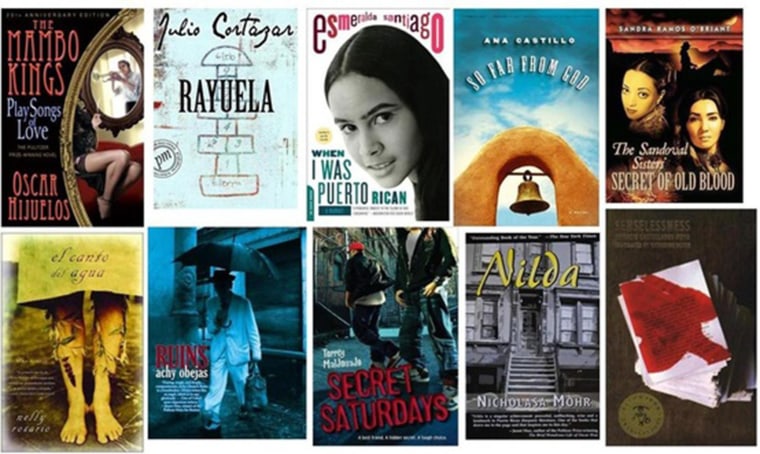While Hispanic Heritage Month is a time to celebrate the richness of Latino culture, forming a Latino book club is one way to recognize it year-round.
With a new report from Publishers Weekly showing that only three percent of the publishing industry is Hispanic, book clubs that are focused on Latino authors or literature fill a vital niche. Here are five tips for starting your own Latino book club:
1. Take advantage of existing resources
Las Comadres & Friends is a national Latino book club, with affiliates in nearly twenty cities. They offer a manual for meetings, tele-conferences with authors, and an annual writing conference. Las Comadres is a non-profit organization, and membership is free. In addition, there are online resources for forming a book club, and many public libraries offer their own clubs. Oprah Winfrey’s website and publishing companies such as Random House, Penguin, and Hachette, also offer reading guides and advice for book clubs.
2. Choose your authors and your format wisely
Nora de Hoyos Comstock, president of Las Comadres book club, encourages readers to consider books that support current and emerging Hispanic authors. “If you are buying something published a while back, that’s great, but publishers look at current sales figures,” she said. “If you want to have Hispanic books in the pipeline for the future, you have to buy and read the new titles. Our voices only count when we buy the books being published today.” Comstock recommends that book clubs meet in a public space, such as a café or library, so that they are visible to potential new members.
Other book club members report that they alternate between new and older books, because their members are price-sensitive and paperback editions are cheaper. An advantage of alternating with older books is a chance to read wonderful U.S. Latino or Spanish and Latin American classics (many of them are translated into English) which might not be familiar to those who have grown up in the U.S.
While some groups like to meet out in a restaurant or public place, others find it easier to meet in members' homes, in a casual setting.
3. Find the right balance between book discussions and socializing
“I’ve been in several book clubs, including one where we met at a restaurant tied to the theme of each month’s book,” said Aurora Anaya-Cerda, owner of La Casa Azul Bookstore in New York City. “So that kept it fresh, and it was fun.” An ideal book club would have between six and eight members, she said, with one person serving as the facilitator to encourage discussion. “But at the same time, book clubs can also be a good way to meet people and share experiences, so they have different purposes, you just have to decide how social you want to be.” La Casa Azul bookstore is home to the Rice and Beans Book Club, which has read such notable Latino authors as Oscar Hijuelos, Esmeralda Santiago and Ana Castillo.
4. Get the word out through personal and professional links
Natalia M. Dominguez, of the Las Comadres Book Club in Ft. Worth, Texas said that outreach is essential to starting a book club. “Go check out a few Latino professional organizations, those are the kinds of people who are readers and who will respond, “ she said. “You can start a book club, honestly, with two or three people, and then just be patient. And certainly, reach out to non-Latinos, to anyone who might be interested in Hispanic literature.”
Maria Ferrer, who runs The Latina Book Club online, adds that social media is key to running a successful group, especially since Hispanics use social media at higher rates than other demographics. “You can recruit members on Facebook, and there are a lot of conversations about books on Twitter. People may not post or join in the discussion on my comments page, but on social media I get the most responses and dialogue.” In the beginning, Ferrer recommends choosing a provocative book, or one on a particularly hot topic, to spark interest.
Follow NBC News Latino on Twitter and on Facebook
5. Encourage members to come to your meetings – even if they haven’t read the book
“Make sure people know that they are still welcome, even if they have only read part of the book, or haven’t started it,” said Aurora Anaya-Cerda. “They can still learn from the discussion, and it might spark their interest.” Nora de Hoyos Comstock agrees. “I tell people to come anyway, no matter what,” she said. “If we can entice them into reading the book, or build their awareness of it, that’s a plus. And maybe they'll go ahead and read it for the next time.”
